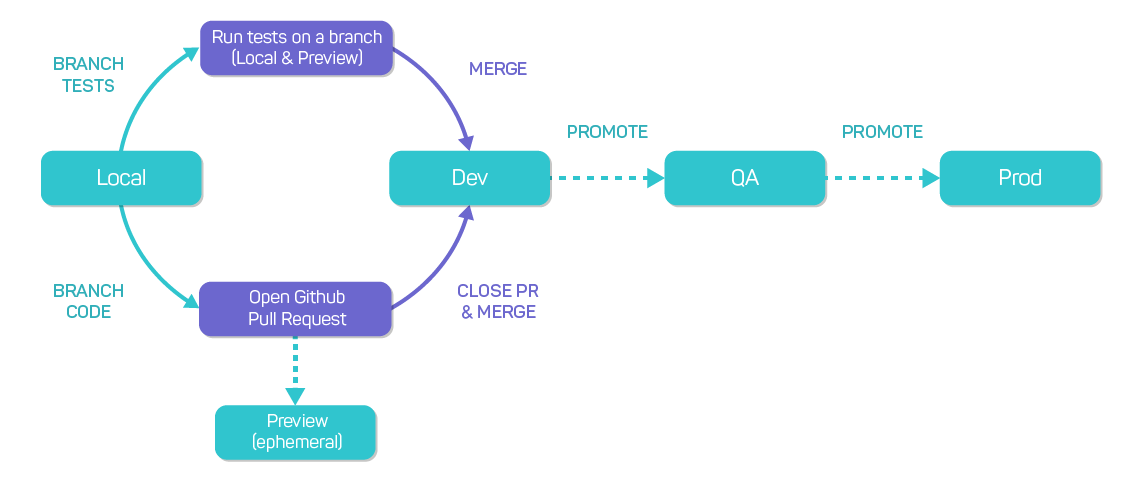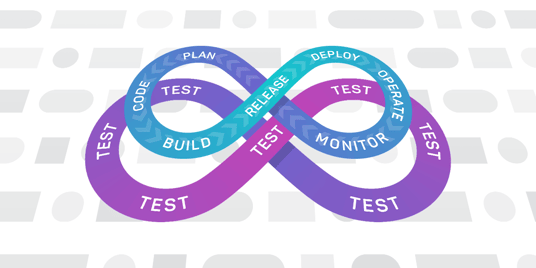DevOps has forced a major shift in software development and testing. As companies adopt practices like CI/CD and DevOps, change becomes constant and legacy testing tools struggle to keep up with the rapid pace of development.
Traditionally organizations relegated testing to QA, staging, or even production environments. With the emergence of agile and even more so with CI/CD, software updates are deploying at a more rapid pace. Organizations have merely hours to write tests, and minutes to execute them, effectively creating the need for continuous automated testing to keep up with development and reduce the QA bottleneck.
Without continuous testing, teams risk costly bugs slipping into production. It’s no secret that frequently releasing bugs has major implications on the customer experience, leading to higher levels of customer churn effectively lowering recurring revenue. To keep up with the testing demand, enterprises are adopting intelligent automation solutions that improve how the entire development team collaborates on quality and participates in testing.
Shift-left: Core to DevTestOps
Shift-left testing means creating a culture of quality by engaging the whole delivery team in testing activities. To do this, it starts with full-stack developers integrating application tests as soon as the first line of code is written. When developers work on code in their local branch, they should also build tests at this stage. This allows for isolated changes to tests, without impacting the master version of that test.

Shift testing to the left by making it easy for developers to create end-to-end tests as they code
Once a pull request is approved, merged, and enters the pipeline, the code should not change significantly. By testing so early in development, teams should use the preview environment as a final code check before they are approved. By adhering to this policy internally businesses can realize faster delivery while reducing risks and costs.
Communication Within Your Delivery Team
Collaboration among the entire delivery team is also key to shifting-left. To start, involve the entire team, including developers, QA, product, and UX in all requirements, planning, and sprint meetings. A diverse perspective is important to building a quality product and allows various functions to contribute their expertise.
Common issue tracking and communication tools are also key to communication and building a culture of quality. By surfacing test results and bugs earlier, teams can work more efficiently. Look at what collaboration tools your organization has already adopted and maintain open communication with your team on development progress. Leaders can also look for testing tools that integrate with your existing collaboration tools to easily surface bugs and test results.
Building Intelligent Pipelines
By building intelligent CI/CD pipelines, teams can make more informed decisions about the development process. Simple steps to building more intelligent pipelines include leveraging tests created by other team members, or even chaining actions and tests together. Developers can configure workflows to test and deploy after passing an agreed-upon criteria. But, there are plenty of opportunities to increase the intelligence of our pipelines.
Move beyond running tests in your pipeline and viewing results, to look at your pipeline in a more sophisticated way. Look for ways to connect automated tests directly to your pipeline tools. Build triggers to run tests when code is deployed, or trigger a code merge when a specific set of tests pass.
Test at every stage of development
By building intelligent pipelines, you can easily enable developers to test without leaving their workflow, and automating much of the testing process. Your team can continue to reduce bugs shipped into production, and reduce repairs and accumulated changes.
At the end of the day, testing is a team sport. It is no longer the sole responsibility of QA to test code. Modern software delivery relies on the adoption of DevTestOps - automating testing throughout the entire lifecycle - to achieve a higher level of efficiency and realize the full potential of DevOps. When code is tested at each stage of development, organizations can minimize interruptions, focus on higher-value work, improve overall customer experience, and ultimately increase revenue.
Related Resources:
The Forrester WaveTM: Continuous Functional Test Automation Suites, Q2 2020





